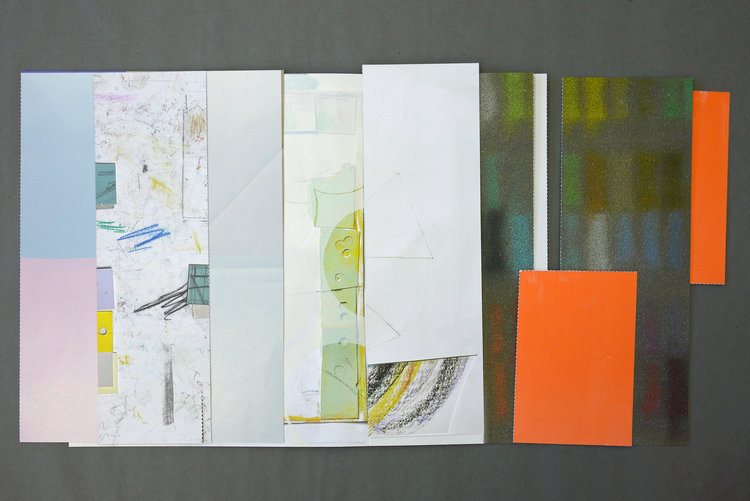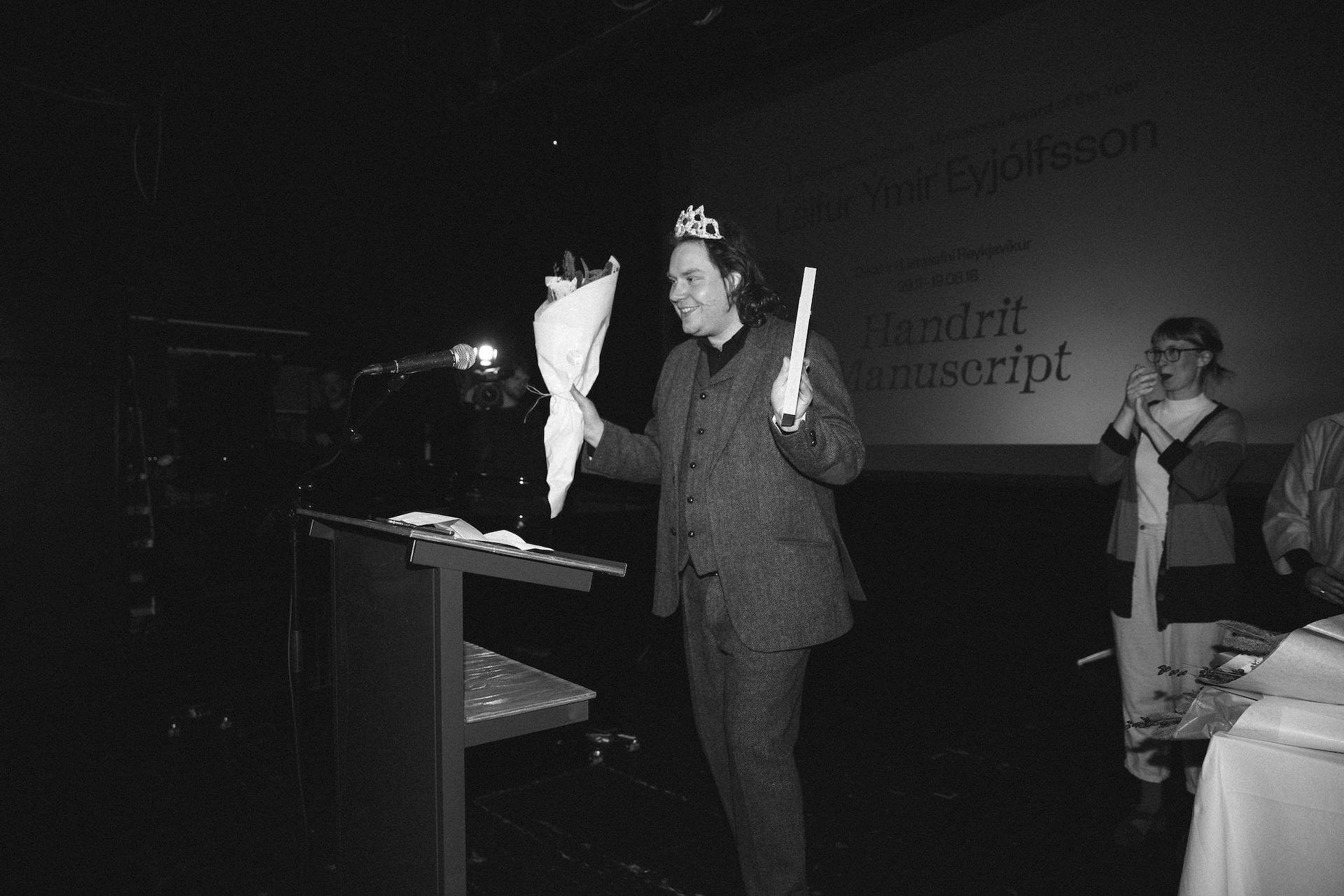
On Sculpture, an artbook by Eygló Harðardóttir

On Sculpture, an artbook by Eygló Harðardóttir
In the 1975 manifesto, The New Art of Making Books, by Ulises Carrión, the Mexican writer, curator, and conceptual artist expanded upon the traditional book form as a three-dimensional site of experience rather than as a container of texts. The manifesto begins with the dismantling of notions of the book: “A book is a sequence of spaces. Each of these spaces is perceived at a different moment – a book is also a sequence of moments. A book is not a case of words, nor a bag of words, nor a bearer of words.” This is where one can certainly find a doorway into Eygló Harðardóttir’s artbook, Sculpture.
Eygló’s organic sculptural installations manifested in book form create a seamless arch between the art object and printed matter. Her larger sculptural practice with its emphasis on the possibilities of material and its relationship to the surrounding space through composition and color take on a new dimensionality in book form, one that is more intimate and attuned to the unique experience of the viewer.
The careful attention paid to materials in Eygló’s larger sculptural practice transferred to the book form brings to mind Jacques Ranciere’s quote from The Future of the Image (2007): The mixing of materialities is conceptual before it is real. Before the visual and verbal became an established practice in the arts, it was literature that was able to bridge the verbal and visual in a way that defied traditional understandings of their differences and conceptually proclaimed the gradually diminishing chasm between them.
In Eygló’s artbook, we find a natural bridge between an object of art and printed matter. This is seen in Eygló’s aim to merge awareness of material, composition, and layers of color with the possibilities of a changeable book form. The binding is loosely stitched enabling flexible folding combinations. Perforated patterns appear on some of the pages, creating various options of bending and tearing some of the parts to create a new approach towards reading the book form as a moldable, interactive space. This is further accentuated by the artist’s emphasis on using ratios from the human body to emphasize the materials’ intended role of being part of an interaction with the viewer/reader.


The shape of the open book seen from above (as seen in the image) also brings to mind W.J.T. Mitchell’s diagram for exploring image-text relationships: the X. The unrepresentable space between image and text that goes beyond formal descriptions of the relationship between vision and language, metaphorical nesting of images, and graphic media is what Mitchell tries to relay in his X diagram. Unlike the slash (/) or the dash ( – ), the X puts an emphasis on the multiplicity of relations between image and text. However, Eygló’s Sculpture expands his X to other dimensions of materiality that encompasses the senses of touching and listening.
„Sculpture,“ says the artist, „is connected to the hands and how the materials are available for touch“. The work, as a sculpture in book form, changes the way one approaches the act of reading and all of the associated bodily notions that attend the act of reading: holding the open book in both hands, turning the pages, resting the book on a surface. The handmade paper invites touch with its soft accumulation of cotton and frayed edges. Perforations invite the reader to tear and bend the pages, creating a possible 3d structure out of the flat pages of the book, after which, it could rest in a new position, open or closed. The sound accompanying the tearing of paper also becomes another layer of texture in reading the book. The experience is one akin to reading poems composed of materials interacting with your eyes, hands, and ears, instead of words themselves.
The artist remarks on the differences in approach between bookworks and exhibition spaces: „Because bookworks last longer than an exhibition, they live on their own in an alternative space. The bookwork has freedom because it is not held by the constraints of an exhibition space. Bookworks are for the body, you can walk into the work and experience it in your hands; the body is the space in which you experience it. When you make bookworks you think towards a more private space than that of the exhibition viewer.”
„I can make two-year-long works that encompass time in a different array. I can take it apart and put it back together again. In this way, it teaches you about reading and gives you a clue about how to read again with the pleasure of the first acts of reading reignited. The books are oriented towards sounds, touch, and the entire orientation towards engaging with a book. It is against exhibitions, essentially.“
Eygló’s Sculpture expands Mitchell’s relationship between image and text to other dimensions by inviting such questions as: What is the future of reading? What does the materiality of the books have to do with their readability?
Erin Honeycutt

This article is a continuation of the series on artists’ books that began with an interview with Jan Voss, one of the founders of Boekie Woekie in Amsterdam.
Sculpture was published by ́uns plural for one in 200 signed and numbered copies using offset printing with four color CMYK, three Pantone spot colors, one color hand-painted.
Paper: Munken Kristall and Munken Polar 300g/m2.
Perforations were made by both machine and handmade, hand die-cuts.
Size 24 x 30 cm/dimensions variable.
Sculpture is available at: ‘uns ́s website catalog, Books in The Back/Harbinger Gallery, NYLO/Living Art Museum, Boekie Woekie and has been included in Printed Matter’s distribution program.
Sculpture came out in December 2016 and was soon after launched at Buro BDP in Berlin. In January 2017 it was presented in Harbinger Gallery in Reykjavík. Sculpture was exhibited in the show Other Hats: Icelandic Printmaking in IPCNY in New York, 2017. The same year the original artworks of the pages in Sculpture were part of the show OPNUN in Kling & Bang Gallery in Reykjavik. This show was presenting a group of artists that were part of a TV series about the Icelandic visual art scene (Curators: Dorothée Kirch and Markús Þór Andrésson). A special exhibition of Sculpture and its original pages was on view at the Culture House in Reykjavík in the exhibition Creative Printing & Artists’ Books curated by National and University Library of Iceland 2018-19.
Eygló Harðardóttir lives and works in Reykjavík: eyglohardardottir.net
́uns plural for one was founded in 2015 by Guðrún Benónýsdóttir. The press is based in Berlin and Reykjavik with an emphasis on publishing artist-made books, multiples and educational material: uns-artbooks.net





